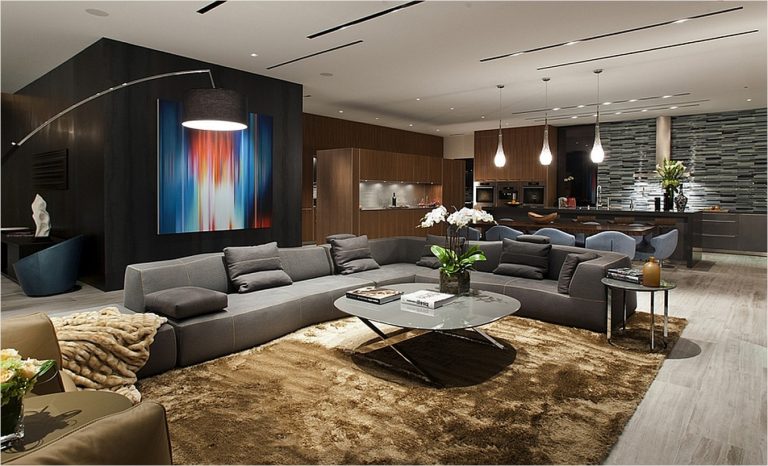Over the past decade, a seismic shift has occurred in the interior design landscape. The emerging focus is not just on achieving a striking aesthetic appeal but also on utilising innovative, sustainable materials to bring unique concepts to life. Today, we delve into the realm of cutting-edge materials transforming interiors across the globe, including the dynamic role of the melamine board.
The Emergence of Cutting-Edge Materials
Interior design has always had a keen eye on the material palette. The canvas upon which designers unleash their creativity, and materials can often make or break a design scheme. Recently, technological advancements and environmental consciousness have driven the rise of a new wave of materials that are both visually stunning and ecologically beneficial.
Melamine Board: The Versatile Innovator
One material that has been gaining recognition in the design industry is the melamine board. A decorative surface solution created by infusing a substrate with melamine resin, it has become a staple in contemporary design due to its versatility, durability, and range of customisation options.
Melamine board is known for its resistance to heat, scratches, and stains, making it an excellent choice for high-traffic areas like kitchens, bathrooms, and commercial interiors. But it’s not just its durability that has made melamine a popular choice. With a plethora of designs and textures available—from the look of raw, natural wood to smooth, monochromatic finishes—melamine board can effortlessly complement any design aesthetic.
Moreover, it is worth mentioning the cost-effectiveness of melamine boards. Compared to solid wood or veneer, it offers a more economical solution, especially for large-scale projects or tight-budget renovations, without compromising on style or durability.
Bio-based Materials: A Step Towards Sustainability
In an era where the concern for our planet’s health is paramount, the use of bio-based materials is gaining momentum in the interior design industry. These materials, derived from renewable resources such as plants and bio-waste, offer a sustainable alternative to traditional materials while adding a touch of natural elegance to interiors.
Bamboo, for instance, is a rapidly renewable resource that has grown in popularity due to its robustness and versatility. Its usage spans from flooring and furniture to decorative elements, offering a tropical, eco-friendly touch to interiors.
Cork, another bio-based material, has made a comeback in interior design. Apart from its distinctive look, cork is appreciated for its excellent acoustic and thermal insulation properties. It also provides a soft underfoot feel, making it a popular choice for flooring, wall coverings, and even furniture.
Smart Materials: The Future of Interior Design
Looking ahead, the integration of technology into interior design materials offers exciting possibilities. Smart materials—those which can change their properties in response to external stimuli like heat, light, or pressure—open up a world of dynamic design options.
For example, thermochromic materials can change their colour with temperature variations. This can result in fascinating visual effects, especially in areas like kitchen backsplashes or bathroom interiors. Photo-luminescent materials, on the other hand, absorb light and emit it when the surroundings darken, providing low-level lighting and enhancing safety in specific areas.
The Art of Material Fusion
The key to effective interior design lies not just in the materials themselves, but also in how they are combined. A smart blend of cutting-edge materials can yield stunning results. For instance, the warmth of a bamboo floor can beautifully contrast with the sleek, modern finish of a melamine board kitchen countertop, creating a harmonious interplay of textures and styles.
Moreover, blending traditional materials with innovative ones adds layers of depth and interest to interiors. Picture an age-old brick wall alongside a vibrant thermochromic mural. It’s a perfect blend of history and innovation, which captures the spirit of modern design.
Embracing Technological Advancements in Materials
It is worth noting that these technological advancements are not just limited to residential or commercial interiors. They are also making their way into other spaces such as hospitals, schools, and public transportation. By incorporating antimicrobial and self-cleaning materials into these spaces, we can create healthier environments. Self-healing materials, which can repair themselves after being damaged, also promise to revolutionise the interior design landscape by enhancing durability and reducing maintenance costs.
The Power of Personalisation
Another exciting development in the world of cutting-edge materials is the rise of personalisation. Today’s consumers crave unique spaces that reflect their personalities, and new materials are rising to the challenge. With customisable options in terms of colours, patterns, textures, and even embedded technology, materials like the melamine board allow individuals to make a distinct personal statement in their interiors. Imagine a kitchen with melamine board cabinets featuring your choice of colours, patterns, and finishes, making it uniquely yours. This trend of personalisation will only continue to grow, allowing us to create spaces that are as unique as we are.
Concluding Thoughts
As we step further into the 21st century, the choices for interior design materials are more diverse and exciting than ever before. From the versatile melamine board to innovative smart materials, designers now have a vast palette to create sustainable, functional, and aesthetically pleasing spaces. This vibrant fusion of tradition, innovation, and sustainability paves the way for a future where design and responsibility go hand in hand. The possibilities are truly endless.

